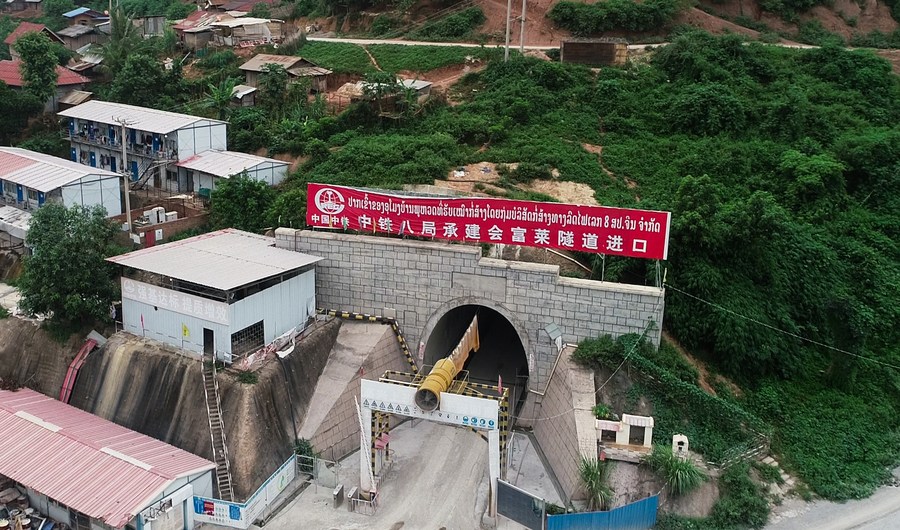Chinese constructor drills through high-risk tunnel in China-Laos railway
The 6,969-meter Houay Phoulai Tunnel in northern Laos, a key bottleneck and highly risky project along the China-Laos railway, has been drilled through by a Chinese railway engineering company.
The China Railway No. 8 Engineering Group (CREC-8) has drilled through Houay Phoulai Tunnel, a highly risky and a key bottleneck project along the China-Laos railway, on Thursday.

China Railway No. 8 Engineering Group (CREC-8) staff take a group photo after boring the Houay Phoulai Tunnel in northern Laos on July 23, 2020. [Photo/CREC-8/Xinhua]
The 6,969-meter Houay Phoulai Tunnel, in northern Laos' Oudomxay Province, some 400 km north of the Lao capital Vientiane, goes through harsh geological conditions, which makes its construction highly risky, and its completion lays a timely foundation for the coming beam setting and rail tracks' installation.
Located in the Luang Prabang geological suture zone, the tunnel crosses multiple large faults and geological fracture zones, with a maximum burial depth of 645 meters, unfavorable geology such as karst, rock burst, water inrush and mud outburst, and severe deformation of soft rock.
Moreover, the tunnel is located in the tropical mountainous area of Oudomxay Province in northern Laos, and the traffic conditions are poor. The CREC-8 project department had to built 143 km of construction roads, overcoming incidents like landslides and mudslides in the rainy season.

Aerial photo taken on July 23, 2020 shows the entrance to the Houay Phoulai Tunnel in northern Laos, drilled through by the China Railway No. 8 Engineering Group. [Photo/CREC-8/Xinhua]
According to He Xinglong, a project manager of the CREC-8, the Chinese engineering firm has been carrying out real-time monitoring of gas and other toxic and harmful gases throughout the construction process, adopting a variety of advanced geological forecasting methods to forecast the surrounding rock to ensure the safety of tunnel construction.
When meeting the severe deformation of the soft rock in the tunnel, the maximum daily deformation of the initial support framework could be as high as over 10 cm, and the steel frame was obviously twisted and deformed, which largely affected the construction safety and progress.
Xiao Zhonghong, the chief engineer of the CREC-8 branch project, said the project department has invited Chinese experts to jointly carry out research and on-site investigation to solve the problem. After adjusting the construction technology and optimizing the construction methods, the Chinese and Lao engineers effectively enhanced the tunnel support, successfully overcame the construction difficulties of severe deformation, and achieved the timely completion of the tunnel.

Aerial photo taken on July 15, 2020 shows the view of the Ban Ladhan Mekong River Super Major Bridge located some 230 km north of Vientiane, capital of Laos. [Photo/CREC-8/Xinhua]
The China-Laos Railway is a strategic docking project between the China-proposed Belt and Road Initiative and Laos' strategy to convert from a landlocked country to a land-linked hub.
The 422-km railway, with 198-km-long 75 tunnels and 62-km bridges, will run from Boten border gate in northern Laos, bordering China, to Vientiane with an operating speed of 160 km per hour.
The electrified passenger and cargo railway is built with the full application of Chinese management and technical standards.
The project started in December 2016 and is scheduled to be completed and operational in December 2021.

